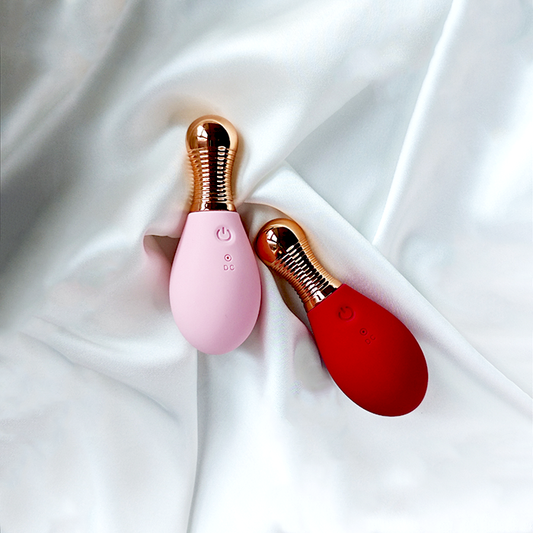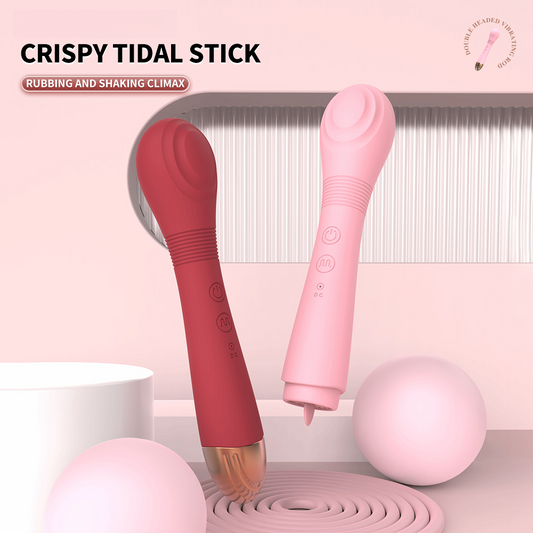
Comprehensive Guide to Women’s Reproductive Health
Diseases · Prevention · Lifestyle · Sexual Wellness
I. Introduction: Why Women’s Reproductive Health Matters
Women’s reproductive health is not just a medical term. It is the key to physical, mental, and emotional balance. It covers everything from menstrual health and fertility to sexual wellness and hormonal balance.
Neglecting reproductive health can lead to chronic diseases, emotional distress, and reduced quality of life. Everyday factors, diet, exercise, sexual activity, and even masturbation, shape how the reproductive system functions.
A 2023 survey in England found that 28% of women had serious reproductive health issues. Over 70% faced menstrual or fertility problems at some time in their lives.
This guide gives a full overview of common conditions and their management. It also explains how lifestyle and sexual wellness are important for good female reproductive health.
II. Common Reproductive Health Conditions
Understanding common conditions is the first step toward empowerment and prevention.
| Condition | Prevalence | Symptoms | Standard Treatment | Lifestyle / Sexual Influence |
|---|---|---|---|---|
| Uterine Fibroids | 20–40% of women by age 40 | Heavy bleeding, pelvic pain | Hormonal therapy, myomectomy, hysterectomy | Exercise and weight management may reduce risk; sexual activity generally safe |
| Endometriosis | ~10% of reproductive-aged women | Pelvic pain, infertility | Hormonal therapy, laparoscopic surgery | Moderate sexual activity or masturbation can relieve stress and pain |
| PCOS (Polycystic Ovary Syndrome) | 6–12% | Irregular periods, acne, infertility | Lifestyle changes, metformin, hormonal contraceptives | Weight control crucial; sexual activity supports hormonal balance |
| PID (Pelvic Inflammatory Disease) | ~1 million cases/year (US) | Abdominal pain, fever, discharge | Antibiotics, partner treatment | Safe sex practices essential; condoms prevent recurrence |
| Dysmenorrhea | 50–90% of menstruating women | Painful periods, fatigue | NSAIDs, hormonal therapy | Sexual activity or masturbation can ease cramps via endorphins |
1. Uterine Fibroids
Benign tumors in the uterus, uterine fibroids often cause heavy bleeding and pelvic discomfort.
Treatment: Hormonal therapy or surgery (myomectomy for fertility preservation).
Lifestyle: Maintain healthy weight; avoid excess red meat.
Sexual Activity: Safe unless discomfort occurs, adjust positions if pain arises.
2. Endometriosis
Endometriosis occurs when endometrial tissue grows outside the uterus, leading to chronic pelvic pain and fertility challenges.
Management: Hormonal suppression (oral contraceptives, GnRH agonists) and laparoscopic surgery for lesions.
Sexual Wellness: Gentle sexual activity or masturbation promotes blood flow, easing pain and stress.
3. Polycystic Ovary Syndrome (PCOS)
A hormonal imbalance marked by irregular periods, acne, and infertility.
Treatment: Lifestyle changes (low-glycemic diet, exercise), metformin, and ovulation induction if needed.
Sexual Impact: Regular sexual activity improves insulin sensitivity and boosts mood-regulating hormones.
4. Pelvic Inflammatory Disease (PID)
A bacterial infection of the upper reproductive tract, often caused by untreated STIs.
Treatment: Antibiotics and partner therapy.
Prevention: Consistent condom use, regular STI testing, and avoiding multiple untreated infections.
5. Dysmenorrhea and Menstrual Disorders
Menstrual pain can disrupt daily life.
Treatment: NSAIDs, hormonal regulation, and heat therapy.
Sexual Wellness: Orgasms during sexual activity or masturbation increase pelvic blood flow and reduce cramping.
III. Lifestyle Factors for Optimal Reproductive Health
Healthy habits directly influence female reproductive health and hormonal balance.
1. Nutrition and Diet
A balanced diet regulates menstrual cycles and improves fertility.
Key nutrients for reproductive health include:
| Nutrient | Sources | Benefits |
|---|---|---|
| Omega-3 fatty acids | Salmon, walnuts, chia seeds | Reduce inflammation, ease menstrual pain |
| Fiber | Fruits, vegetables, whole grains | Regulates estrogen metabolism |
| Iron | Spinach, legumes, red meat | Prevents anemia from heavy bleeding |
| Vitamin D | Sunlight, fortified milk | Supports ovulation and hormonal function |
| Antioxidants | Berries, green tea | Protects ovarian cells from oxidative stress |
Pro tip: Dark chocolate in moderation helps ease cramps, magnesium and antioxidants work wonders.
2. Physical Activity
Exercise supports hormone regulation and stress reduction.
| Exercise Type | Frequency | Benefits |
|---|---|---|
| Aerobic (walking, swimming) | 150 min/week | Improves cardiovascular and reproductive health |
| Strength training | 2–3 times/week | Enhances insulin sensitivity and hormone balance |
| Yoga / Pilates | 2–3 times/week | Relieves cramps and supports pelvic floor health |
| Kegel exercises | Daily | Strengthens pelvic floor, improves sexual satisfaction |
Avoid over-exercising , excessive intensity may disrupt ovulation.
3. Stress and Mental Health
Chronic stress increases cortisol and disrupts reproductive hormones.
Practices like yoga, mindfulness, and sexual activity restore hormonal equilibrium.
Studies show regular masturbation or sexual activity lowers cortisol and boosts oxytocin, promoting calm and better sleep.
IV. Sexual Activity and Masturbation: A Forgotten Health Tool
Sexual wellness is not just pleasure, it’s physiology.
Benefits of Sexual Activity:
- Improved blood flow to pelvic organs
- Hormonal regulation (estrogen and progesterone balance)
- Reduced stress through endorphin and oxytocin release
- Better immune function
Potential Risks:
Unprotected sex can lead to STIs or PID, causing long-term fertility issues. Always practice safe sex and regular testing.
Masturbation:
Safe, therapeutic, and empowering, it enhances mood, reduces pelvic tension, and helps women connect with their bodies.
Think of it as a “mini workout for your pelvic health.” Maybe you want learn more, please Click - Mutual Masturbation: A Guide to Shared Self-Pleasure
V. Preventive Screenings and Health Checks
| Screening | Start Age | Frequency | Purpose |
|---|---|---|---|
| Pap smear | 21 | Every 3 years | Detect cervical cancer |
| HPV test | 30 | Every 5 years | Identify HPV-related risks |
| Pelvic exam | 21 | Annually | Detect cysts, fibroids, infections |
| Breast exam | 20 | Monthly self, yearly clinical | Early cancer detection |
| STI testing | Sexually active | Every 3–12 months | Prevent PID and infertility |
Vaccinations (HPV, Hepatitis B) and safe sex practices are crucial parts of reproductive health prevention.
VI. Expert FAQ on Women’s Reproductive Health
Q1: Can exercise improve menstrual cycles?
A: Yes, moderate exercise improves hormonal balance and cycle regularity.
Q2: Does masturbation affect fertility?
A: No. It promotes stress relief and healthy blood circulation.
Q3: Is sexual activity linked to reproductive health?
A: Yes, it supports hormone regulation and pelvic muscle tone.
Q4: What diet helps with PCOS or endometriosis?
A: Anti-inflammatory foods, omega-3s, greens, and whole grains.
Q5: When should I see a doctor for menstrual pain?
A: Severe or persistent pain, heavy bleeding, or irregular cycles.
VII. The Future of Women’s Reproductive Care
1. Personalized Medicine:
Genetic testing enables customized treatments for conditions like PCOS and endometriosis.
2. Digital Health & Telemedicine:
Apps that track menstrual cycles and ovulation empower women to understand their bodies better.
3. Global Initiatives:
Health organizations worldwide are improving access to contraception, education, and reproductive care.
VIII. Summary and Practical Recommendations
| Factor | Best Practice | Health Benefit | Fun Tip |
|---|---|---|---|
| Diet | Anti-inflammatory foods | Balanced hormones | Dark chocolate allowed |
| Exercise | 150 min aerobic, 2–3x strength | Improves insulin & hormone balance | Dance like no one’s watching |
| Stress | Mindfulness & sexual wellness | Lowers cortisol | Laugh more |
| Sexual Activity | Safe sex & masturbation | Boosts endorphins | Treat it as self-care |
| Sleep | 7–9 hours/night | Supports fertility | Keep your phone out of bed |
IX. Conclusion
Maintaining women’s reproductive health means understanding your body, nurturing your hormones, and embracing sexual wellness without shame.
When you eat mindfully, move often, manage stress, and enjoy safe intimacy, your reproductive system benefits. You will have better cycles and feel more vitality and joy.
Reproductive health is not just a one-time visit. A lifelong discussion involving your body, mind, and pleasure exists.
References
A Comprehensive Guide to Gynecology: Women's Reproductive Health
Women's Awareness of Reproductive Health
A Practical Guide to Gynecologic and Reproductive Health
Well-Woman Visit - American College of Obstetricians and Gynecologists
The Influence of Gender Norms on Women's Sexual and Reproductive Health
Sexual Activity and Hormonal Health











